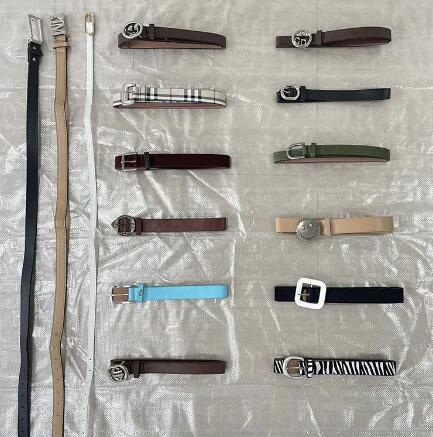The Environmental Impact of Disposing Used Leather Belts and How to Mitigate It
2024-09-04
Leather belts are a common accessory in many wardrobes, but when they become worn out or no longer fit, they often end up in the trash. Unfortunately, disposing of leather belts in this way can have significant environmental consequences. In this blog, we’ll explore the environmental impact of discarding used leather belts and discuss ways to mitigate this impact through recycling, repurposing, and mindful consumption.
The Environmental Cost of Leather Production
Before we dive into the disposal of leather belts, it’s important to understand the environmental impact of leather production. Leather is made from animal hides, typically cowhide, which requires extensive resources, including water, land, and energy. The tanning process, which turns rawhide into leather, involves chemicals such as chromium, which can be harmful to the environment if not properly managed.
When a leather belt is discarded, all the resources and energy used in its production go to waste. Additionally, if the belt ends up in a landfill, it contributes to environmental pollution, as leather takes years to decompose and can release harmful chemicals into the soil and water.
The Problem with Landfill Disposal
When used leather belts are thrown away, they often end up in landfills, where they can take decades to decompose. As leather breaks down, it can release toxins into the environment, particularly if the leather was treated with chemicals during the tanning process. These toxins can leach into the soil and water, posing risks to wildlife and human health.
Furthermore, the decomposition of organic materials like leather in landfills can produce methane, a potent greenhouse gas that contributes to climate change. The accumulation of waste in landfills also takes up valuable land and resources that could be better utilized for recycling or other sustainable practices.
Mitigating the Environmental Impact
There are several ways to mitigate the environmental impact of used leather belts, from recycling and repurposing to making more sustainable purchasing decisions.
1. Recycling Leather Belts
While leather recycling is not as common as recycling other materials like plastic or metal, there are still options available. Some specialized recycling centers accept leather goods, where the leather can be broken down and repurposed into new products. Additionally, some companies offer take-back programs for leather products, allowing you to return your old belts for recycling or repurposing.
2. Repurposing and Upcycling
As discussed in the previous blog, repurposing and upcycling used leather belts is an excellent way to give them a second life. By transforming old belts into new items like wall hooks, coasters, or drawer pulls, you can reduce waste and create unique, handmade goods. Upcycling not only extends the life of the leather but also reduces the demand for new resources and products.
3. Donating or Selling
If your used leather belt is still in good condition but no longer suits your style or needs, consider donating it to a thrift store or charity. Many people are looking for affordable leather accessories, and donating your belt can help reduce waste while benefiting others. Alternatively, you can sell the belt through online marketplaces or consignment shops, giving it a new home and keeping it out of the landfill.
4. Making Sustainable Choices
One of the most effective ways to reduce the environmental impact of leather belts is to make more sustainable purchasing decisions. When buying a new belt, consider the following:
- Quality Over Quantity: Invest in a high-quality leather belt that will last for years, rather than purchasing cheaper, lower-quality options that will wear out quickly.
- Ethical Brands: Look for brands that prioritize ethical and sustainable practices in their leather production, such as using vegetable-tanned leather or sourcing hides from responsibly managed farms.
- Secondhand Shopping: Consider buying secondhand leather belts from thrift stores or online marketplaces. This reduces the demand for new leather products and extends the life of existing ones.
Conclusion
The environmental impact of disposing of used leather belts is significant, but there are ways to mitigate this impact through recycling, repurposing, and making more sustainable choices. By being mindful of how we dispose of and purchase leather goods, we can reduce waste, conserve resources, and minimize our ecological footprint. The next time you’re ready to part with an old leather belt, consider the alternatives to simply throwing it away—you might just find a new purpose for it that benefits both you and the planet.



